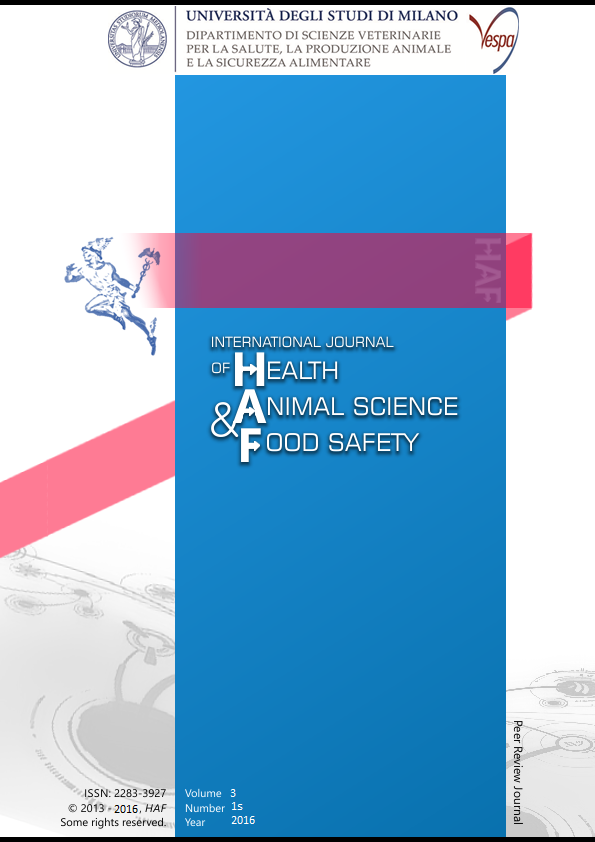Abstract
Severe equine asthma (heaves) is a chronic genetic-environmental condition characterized by airway
neutrophilic inflammation leading to airway obstruction, lung tissue remodeling and hypoxemia
(Bullone, 2015). Hypoxemia triggers pulmonary vasoconstriction, resulting in higher vascular resistance
and development of pulmonary hypertension (PH). PH-associated cardiovascular complications could
be present in the end-stage disease, as it happens in human type 3 PH (Tsangaris, 2012). Pulmonary
vascular remodeling is involved in the pathogenesis of type 3 PH (Singh, 2016) and may represent a
therapeutic target for preventing PH onset, both in human and in horses. In this study, we investigated
the presence of pulmonary artery remodeling in severe equine asthma, as, to the best of our knowledge,
this has not been yet studied. Lung biopsy specimens were collected via thoracoscopy from 6 asthmatic
and 5 age-matched control horses. Histomorphometric assessment was performed on Movat-Russell
stained histological sections, evaluating pulmonary artery wall area, intimal area, medial area and their
correlations with the internal elastic lamina length (IEL) (Fernie, 1985). The total amount of smooth
muscle within the artery wall and the density of proliferating smooth muscle cells were similarly
evaluated using immunostaining for α-smooth muscle actin (α-SMA) and proliferating cell-associated
nuclear antigen (PCNA). Increased pulmonary wall area, increased amount of smooth muscle and loss
of correlation between intimal area and IEL were present in asthmatic horses, when compared to
controls. In conclusion, pulmonary artery remodeling due to smooth muscle hypertrophy and intimal
muscolarization may be induced by persistence of hypoxic vasoconstriction stimulus and release of
cytokines from inflammatory cells infiltrating the annexed airways (Barbera, 2003).
Riferimenti bibliografici
Barbera J.A., Peinado V.I., Santos S., 2003. Pulmonary hypertension in chronic obstructive pulmonary disease. Eur Respir J. 21(5), 892-905.
Bullone M., Lavoie J.P., 2015. Asthma "of horses and men"--how can equine heaves help us better understand human asthma immunopathology and its functional consequences? Mol Immunol. 66(1), 97-105.
Fernie J.M., Lamb D., 1985. Method for maximising measurements of muscular pulmonary arteries. J Clin Pathol. 38(12), 1380-1387.
Singh I., Ma K.C., Berlin D.A., 2016. Pathophysiology of pulmonary hypertension in chronic parenchymal lung disease. Am J Med. 129(4), 366-371
Tsangaris I., Tsaknis G., Anthi A., Orfanos S.E., 2012. Pulmonary hypertension in parenchymal lung disease. Pulm Med. 2012, 684781.
This work is licensed under a CC BY-SA 4.0 international

